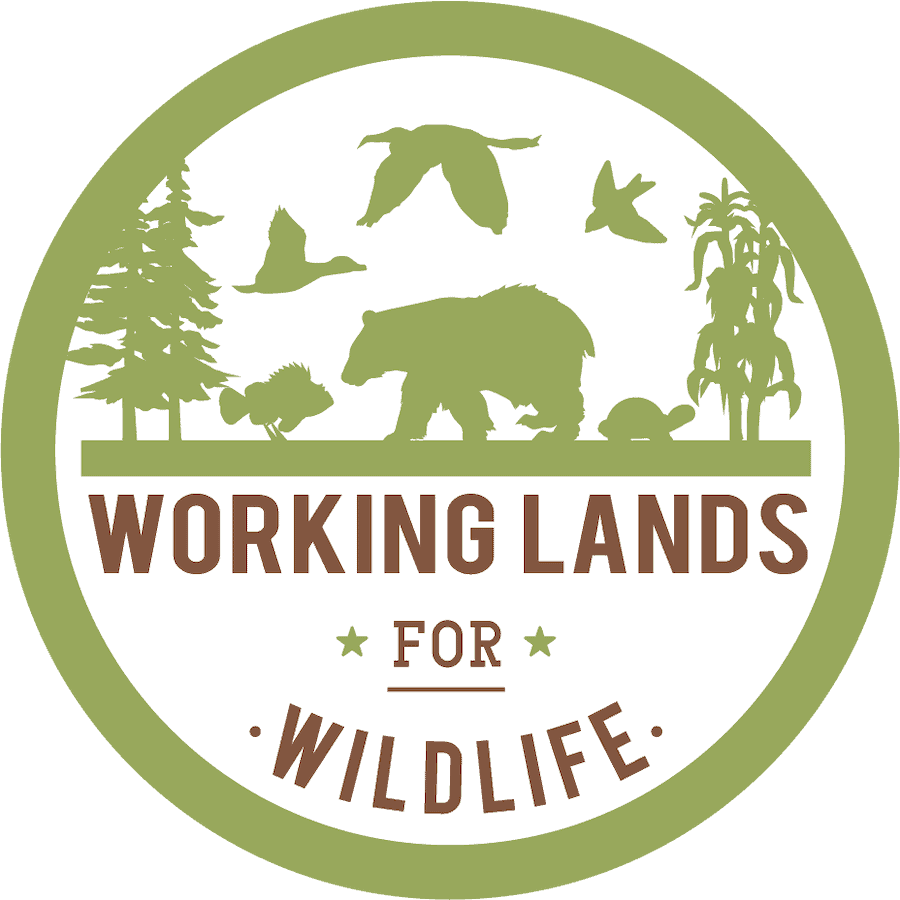Videos
The Habitat Matrix - Stepping Down Bird Management From Landscape to Stand
Part 5 of a 12-part monthly lecture series, Forests for the Birds: Conserving America’s Forest Birds. July 20, 2021.
Working With Farmers and Landowners in NY to Restore Bog Turtle Habitat Powerpoint Presentation
Approximately 15 minute presentation on conducting bog turtle habitat conservation through Farm Bill programs on private lands, and how to work with private landowners. Presented by Elizabeth Marks of NRCS, an Area Biologist in upstate NY who has extensive experience with this topic.
Webinar- Course on Native Warm-Season Grass Forages and Grazing Management for Bobwhites
DEC 1-2, 2021. This webinar covers native warm-season grass forages in the eastern U.S. and integrating grazing management for Northern Bobwhites. The webinar was targeted at technical advisors who develop grazing management plans with landowners. This webinar was presented with the support of the Working Lands For Wildlife – Northern Bobwhite project. Key Topics: science-based information related to native warm-season grass forages, their attributes, proven establishment techniques, management guidelines, and integrating grazing management with bobwhites
Landscape Partnership Flagship Newsletter 2021
Welcome to the Landscape Partnership!
Grazing Management Minute: Establishing Native Warm Season Grasses
In ODA's latest Grazing Management Minute, join Quail Forever's Jason Jones and Clinton County farmer Nathan Rice to learn more about establishing native warm season grasses.
Beef, Grass, and Bobwhites – Quail Management in Eastern Native Warm-Season Grass Pastures
This technical bulletin is targeted to technical advisors working with cattlemen and women in the eastern U. S. who are interested in managing for bobwhites. The authors combine a review of the literature, current research and first-hand experience to present this first-of-its-kind technical manual integrating grazing and bobwhite management in the eastern U. S. Published by NBTC and funded by WLFW.
Eastern redcedar burning tips
Landowners and forest managers are welcomed to learn about how to clear and Eastern redcedar and maintain their lands and forests with prescribed burns.
The Importance of Regular Prescribed Burning
Landowners and producers are welcomed to learn about the importance of regular prescribed burning. View property that was recently burned and how this treatment helps manage the land.
Managing Burns Safely
Tips for landowners and producers on how to burn their pasture safely and efficiently in the spring. Brought to you by John Weir at Oklahoma State University.
The benefits of prescribed burns in growing season
Fire Ecologist John Weir describes the benefits of prescribed burns during the livestock grass growing season.
The Benefits of Opening Forest Canopies
Learn about the benefits of creating open canopy in oak forested areas -- for livestock, aesthetics, and wildlife -- with Dwayne Elmore from the Oklahoma State University Extension.
The Value of Land
This video shares the stories of low-wealth heirs’ property owners in the South -- and how they are being served by The Center for Heirs' Property to protect rural, family-owned land.
OSU: Introduction to Prescribed Fire
Interested in learning how to conduct a safe and effective prescribed burn? Enroll in the OSU Extension Introduction to Prescribed Fire online course to learn best practices for conducting a safe and effective burn. The course features interactive learning activities and custom videos.
Winter Grazing - a Better Way to Feed
In this video, three livestock producers describe how extending the grazing season with winter grasses has saved them time and money, while also improving the environment; and they demonstrate the methods they used to achieve these savings. Sponsored by the NRCS - East National Technology Support Center.
Introduction to LANDFIRE video series
Through a short series of videos, learn about LANDFIRE: a shared program between federal wildland fire management programs that provides landscape scale geospatial products to support cross-boundary planning, management, and operations. Use LF data for landscape assessment, modeling, analysis, and more.
Reconnecting Cattle and Quail
Learn about the Working Lands for Wildlife program and work in Ohio between USDA-NRCS and local farmers and ranchers. Grazing cattle on warm season, native grasses is great for cattle as well as critical species like the Northern Bobwhite Quail. Video for landowners and cattle producers. Presented by Nick Schell (USDA-NRCS Ohio) and Dr. Pat Keyser (UT - Center for Native Grasslands Management) at the Ohio Forage and Grassland Council Conference in 2017.
National Association of State Foresters Weekly Newsletter April 16 2021
Smokey awardees named, NASF rallies support for new bill & Forest Stewardship Program...
Purdue University Help the Hellbender Brochures, Lesson Plans, Videos & Games
The Hellbender is a giant, aquatic salamander that has experienced severe population declines throughout its range. It is a sensitive species and there are a number of factors contributing to its declines. To help address the varied threats facing the Hellbender, Help the Hellbender has produced several new products focused on educating both stakeholders and the general public on ways that they can help protect hellbenders.
World of Wildland Fire YouTube Channel
The World of Wildland Fire YouTube channel includes videos on fuels, fire behavior, and fire ecology.






















